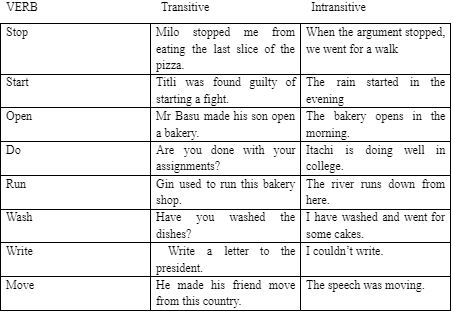All of us are familiar with verbs. Verbs are a part of speech, to express one’s action or state of being. There are several types of verbs but all action verbs are either transitive or intransitive. Here, we are going to discuss transitive and intransitive verbs and give you basic guidance on the difference between transitive and intransitive verb.
Transitive and Intransitive verbs
Transitive and Intransitive verbs are two types of verbs that we are all very familiar with, even if you didn’t have a clear idea about them before. We use a lot of transitive and intransitive verbs in our everyday conversation and writing without always noticing if the verb is transitive or intransitive.
To put it simply, transitive verbs are those verbs that take up an object to act. Now, this of course doesn’t refer to the actual action but what is happening in the sentence. To be meaningful if a verb in a sentence needs an object, then we can call it a transitive verb.
Let’s take an example. Sumit brought a green parrot yesterday.
In the above sentence, the subject “Sumit” acts bringing. Hence “brought” is the verb in this sentence. But to make proper sense the verb requires an object. If we question the verb with what, we get the answer, “a green parrot”. So, “a green parrot” is the object and the verb is transitive.
An intransitive verb is a verb that doesn’t need an object to act. The concept of an intransitive verb is to express an action that is taken upon by the subject on itself or themselves. Some verbs can be used as both transitive and intransitive verbs but some verbs are just to be used for intransitive verbs, such as the verb form of death. One cannot die something, it’s impossible.
Cambridge online dictionary’s intransitive verb’s description is “A verb that does not have or need an object”.
Examples
Let me give you guys some Intransitive verb examples and their usage in a sentence to fully explain how transitive and intransitive verbs work.
Let us see some intransitive verb examples,
- I could not drink coffee anymore.
- The water droplets drop continuously.
- We got up at dawn.
- I went to school early.
- We cooked a lot of food.
- The water level is rising alarmingly.
- I had a nightmare last night.
- We moved to Kolkata.
- Though I couldn’t go to Goa for the summer vacation, I was happy.
- We drove to Highland Park.
So the verbs are “eat”, “go”, “move”, “drops”, “drink”, “drive” etc., and none of these sentences has an object, making them ideal intransitive verb examples.
Here are some Transitive verb examples along with the intransitive verb examples to help you understand the differences

 Profile
Profile Settings
Settings Refer your friends
Refer your friends Sign out
Sign out






